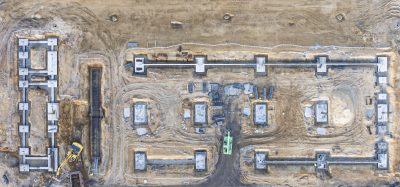IATA urges need for sustainable aviation fuels post-COVID-19
- Like
- Digg
- Del
- Tumblr
- VKontakte
- Buffer
- Love This
- Odnoklassniki
- Meneame
- Blogger
- Amazon
- Yahoo Mail
- Gmail
- AOL
- Newsvine
- HackerNews
- Evernote
- MySpace
- Mail.ru
- Viadeo
- Line
- Comments
- Yummly
- SMS
- Viber
- Telegram
- Subscribe
- Skype
- Facebook Messenger
- Kakao
- LiveJournal
- Yammer
- Edgar
- Fintel
- Mix
- Instapaper
- Copy Link
Posted: 9 July 2020 | International Airport Review | No comments yet
Current production rates are too low for aviation to realistically use SAF, despite proven potential and airline efforts to date.


The International Air Transport Association (IATA) has called for the International Energy Agency (IEA) to prioritise investment in sustainable aviation fuel (SAF) to help power aviation’s contribution to the post-COVID-19 recovery.
The world must ‘build back better’ from the COVID-19 crisis with attention focused on investment in carbon-reduction technologies and in SAF, which will create jobs at this critical time and boost aviation’s progress towards its goal to cut aviation emissions to half 2005 levels by 2050.
Current SAF production rates are too low for aviation to reach this goal, despite its proven potential and airline efforts to date:
- SAF can cut CO2 lifecycle emissions up to 80 per cent compared with conventional jet fuel
- SAF uses sustainable fuel sources which do not compete with food or water, or damage biodiversity
- Due to extensive testing and investment from airlines, SAF are certified as safe, sustainable, and ready-to-use
- Over 250,000 flights have already taken off with a blend of SAF.
“The enormous amount of money that governments are investing in the economic recovery from COVID-19 are an opportunity to create a legacy of energy transition for the aviation industry. To achieve this, governments, the finance community and the fuel producers – both large and small – must work together with the goal of rapidly increasing production of affordable sustainable aviation fuel,” said Alexandre de Juniac, IATA’s Director General and CEO.
IATA estimates that current SAF production is 50 million litres annually. To reach a point where the scale of production will see SAF costs drop to levels competitive with jet fuel, production needs to reach seven billion litres or two per cent of 2019 consumption.
“As much as airlines want to use SAF, production is well below the scale needed for prices to fall to competitive levels. Attaining the right price point is even more crucial as industry losses and debt levels rise. But if governments can use this unique time to combine a safe fiscal and regulatory framework supporting SAF production with the direct allocation of stimulus funds to SAF production, it is possible to reach the two per cent tipping point in 2025. That would power greener flight, create jobs and fuel the economic recovery together,” said de Juniac.
Related topics
COVID-19, Emissions, Regulation and Legislation, Sustainability, Sustainable Aviation Fuel (SAF), Sustainable development
Related organisations
International Air Transport Association (IATA), International Energy Agency


















